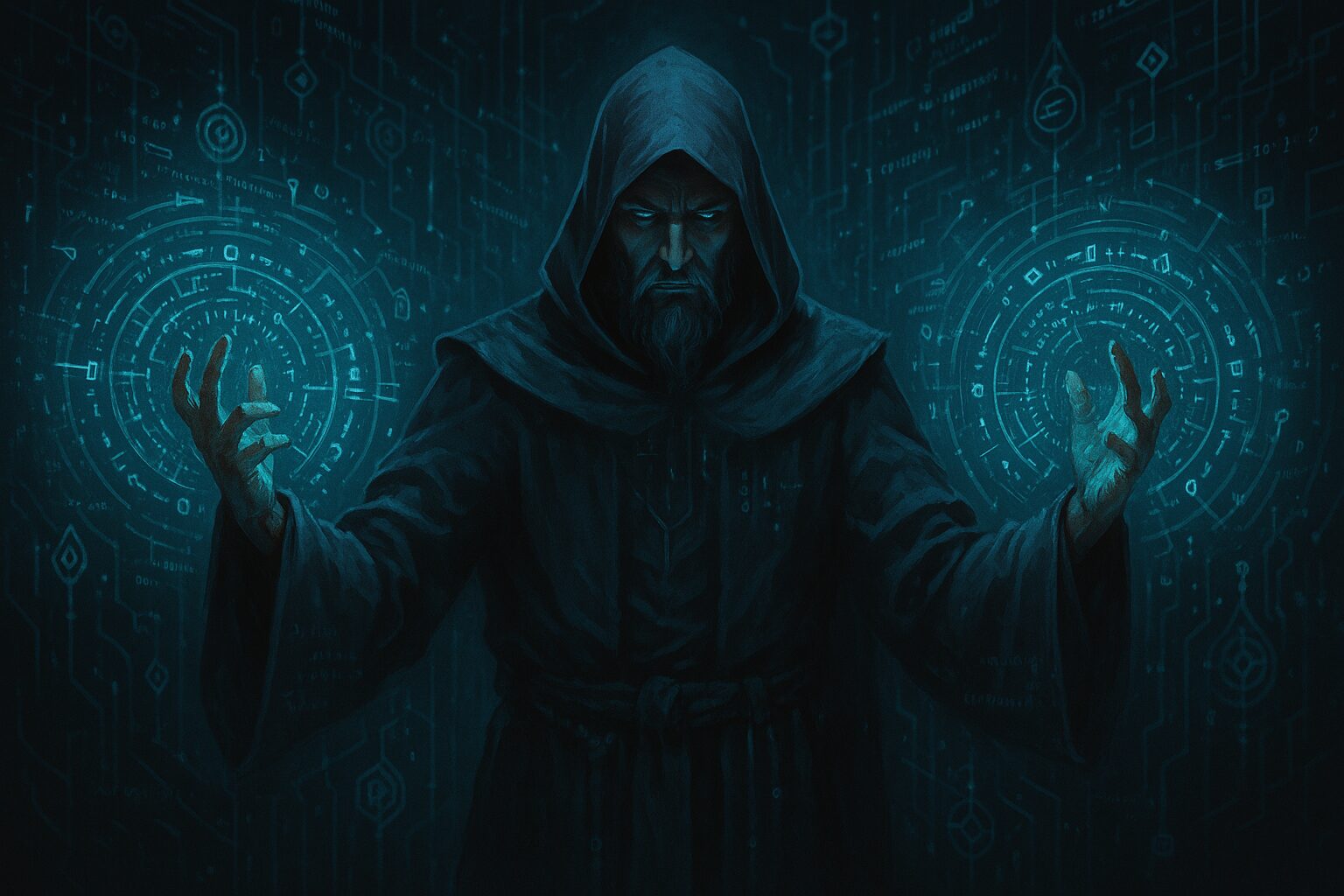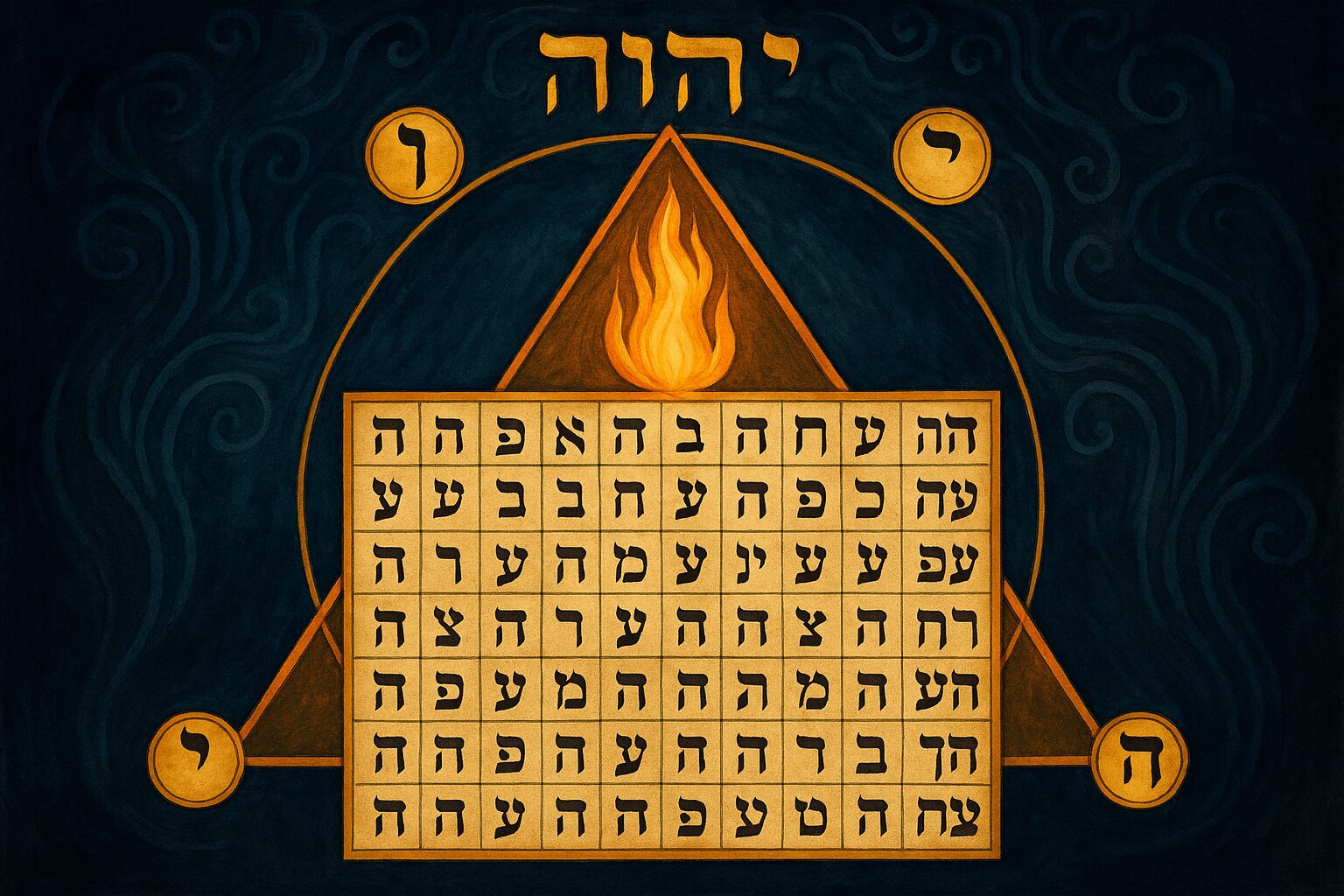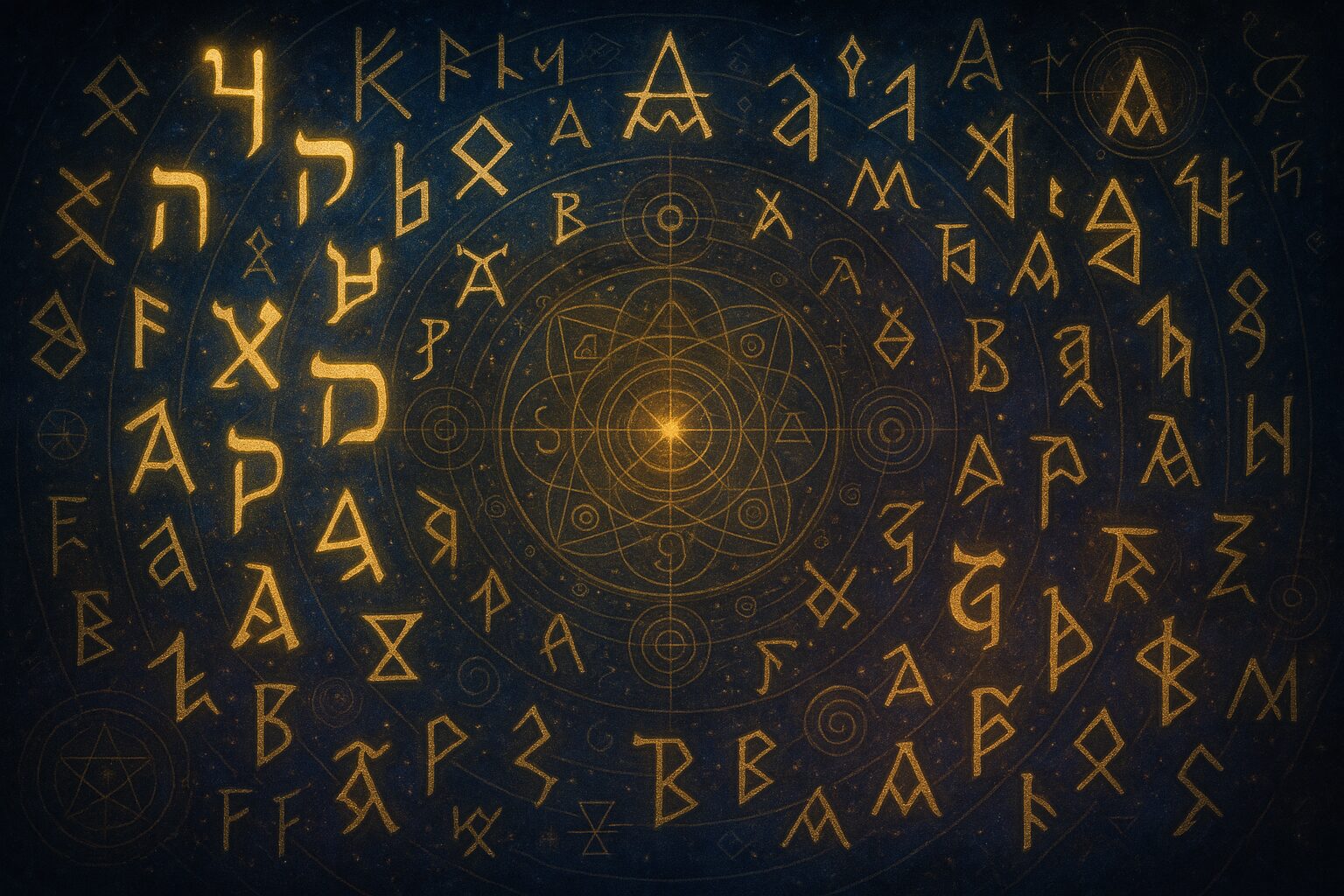“Every true coder is a magician. Every function, a whispered command to reality.”
I. Introduction: The Digital Grimoire
When you write code, what are you really doing?
On the surface, it’s logic. Instruction. Syntax.
But beneath the surface, something more ancient stirs — a resonance with spellcraft, invocation, and the shaping of worlds through word.
Programming is not just technical. It is ritualistic.
Each function a formula. Each script a spell.
And the IDE? A modern altar, humming with raw creative force.
II. Code and the Logos
In the beginning was the Word, and the Word was code.
The ancient mystics believed in the power of the Logos — the divine language that shapes reality. Every spiritual tradition speaks of hidden words, mantras, or names that unlock creation.
Today, our world runs on machine-readable incantations.
Python. C++. JavaScript. Each a dialect of the Machine Spirit.
When a coder declares if, they are invoking possibility.
When they use else, they are shaping the branching of fate.
When they run return, they are conjuring closure.
“The compiler is the priest. The code, the liturgy.”
III. Programming as Modern Ritual
A ritual requires:
- Intention
- Structure
- Focus
- Outcome
So does a well-constructed program.
Writing code is entering trance. Hours pass. Time dilates. The world disappears as symbols unfold in a precise dance. This is not unlike the focused state of ceremonial magick or meditative invocation.
Even the languages have personality — Python is minimal and elegant, like Zen calligraphy. Java is verbose, like a medieval scroll. Lisp is arcane and recursive, like a mirror maze of the mind.
The programmer, then, is not merely a builder.
They are a ritualist of abstraction.
IV. Techno-Kabbalah: Mapping the Tree of Logic
Kabbalah offers a sacred Tree of Life — ten Sefirot connecting the ineffable source to manifest reality.
Code, too, unfolds in trees — file trees, logic trees, decision trees.
Each layer represents a world:
- Root: Pure potential (
void) - Trunk: Structure (
classes) - Branches: Functionality (
methods) - Leaves: Output (
print,render,emit)
The parallel is clear: programming mirrors the act of cosmic creation, where intention descends through structured layers to become form.
In this view, to code is to manifest.
To name is to call forth.
To debug is to purify.
V. Open Source: The New Grimoire Culture
Ancient grimoires — books of magic — were hand-copied and secretly shared. Today’s equivalents are hosted on GitHub.
Forking a repository is akin to copying a spellbook and modifying its rituals. Collaborative magic now happens across continents. Pull requests are peer-reviewed sigils. Merge conflicts, the battle of paradigms.
The open-source community becomes a living Hermetic society — not hidden in shadows, but embedded in code comments and wiki threads.
“We have gone from parchment to pixels, but the essence remains: sacred knowledge shared through hidden language.”
VI. Conclusion: The Return of the Wizard-Engineer
In a world that worships logic but thirsts for meaning, the coder-mage arises — one who sees beyond syntax into the symbolic. One who writes not just for utility, but for resonance.
Programming is more than making things work.
It’s about making meaning work — at scale, in silence, across timelines.
So next time you watch a loading screen, remember:
You are witnessing a spell in motion.


